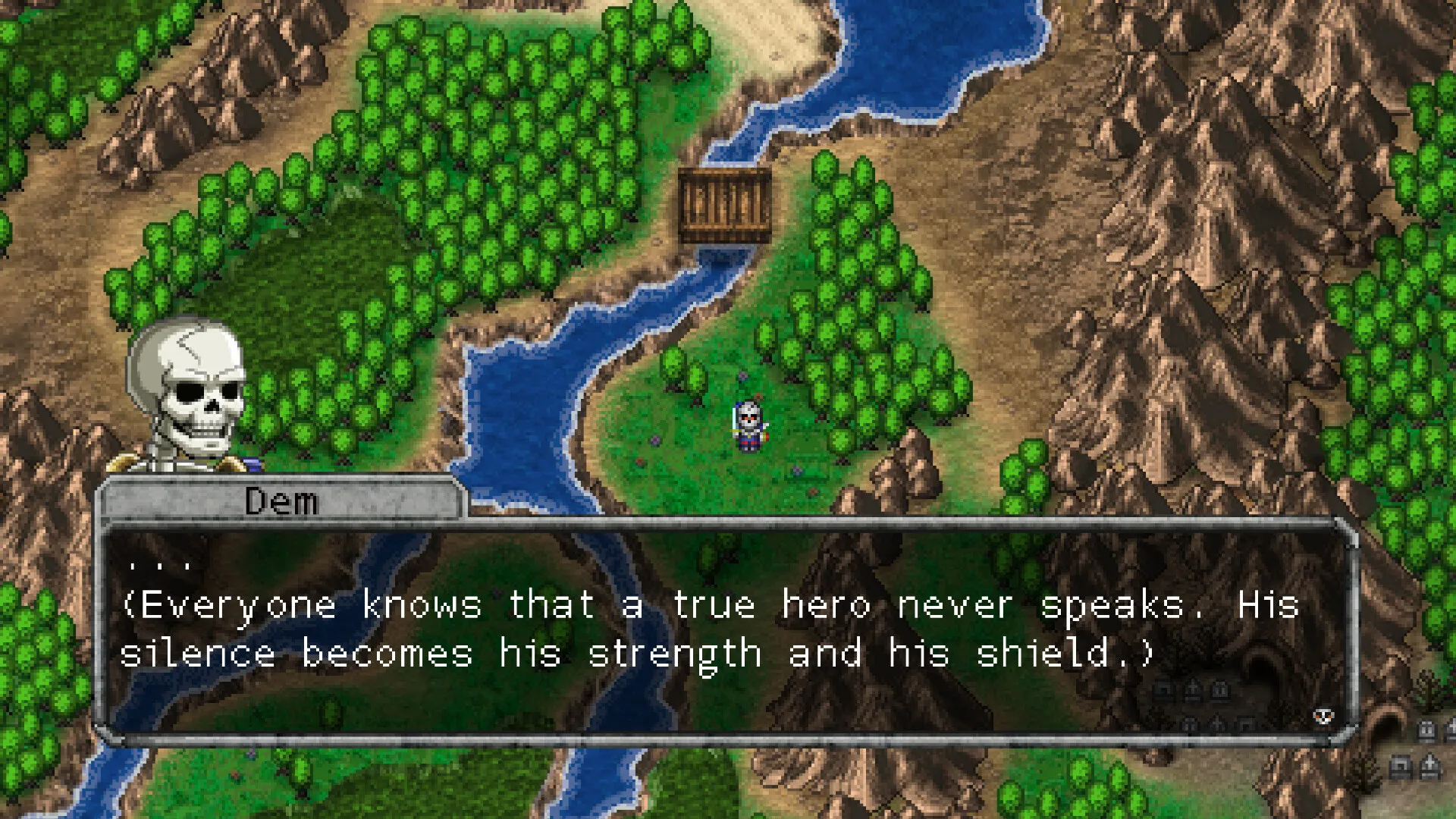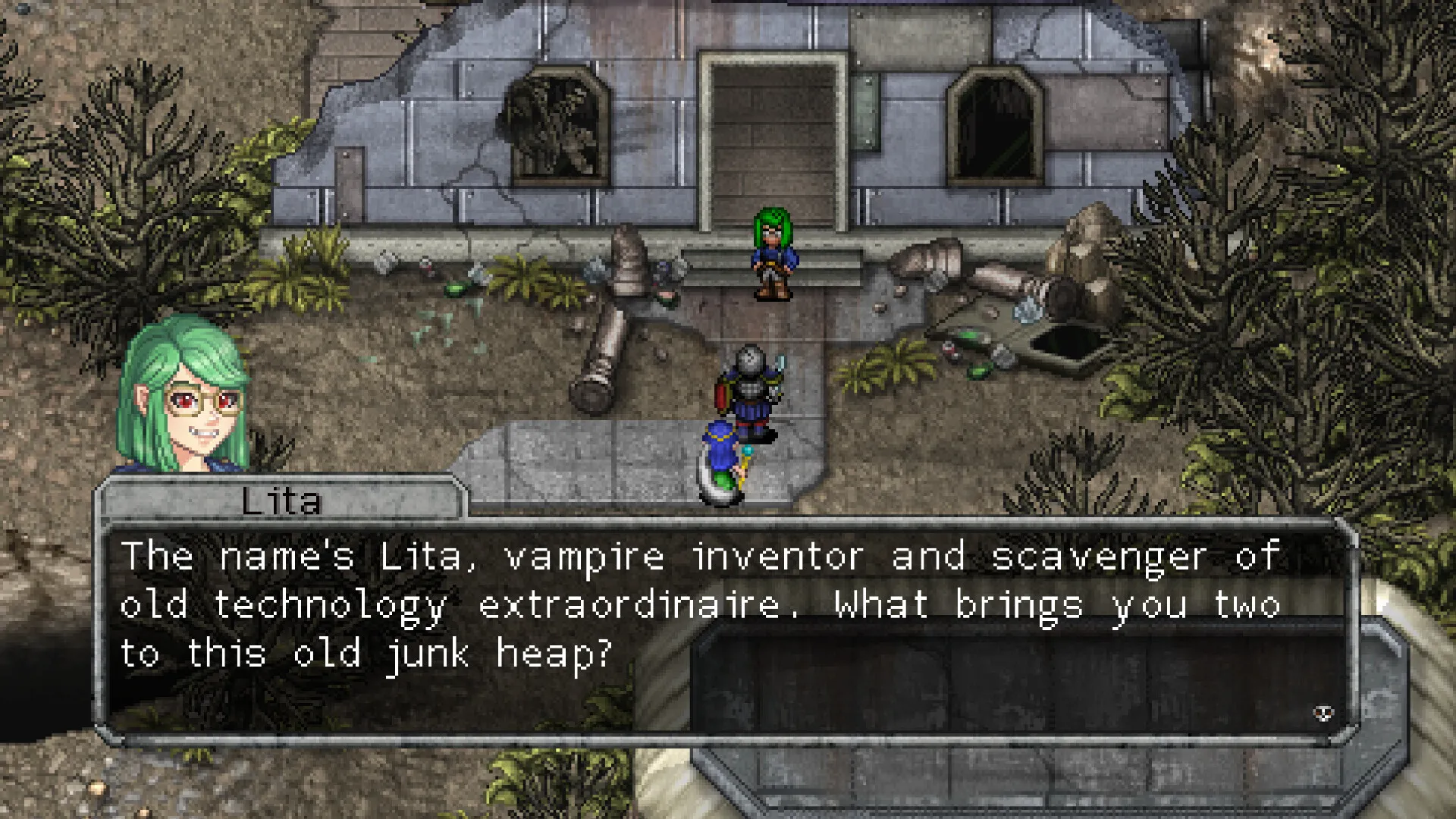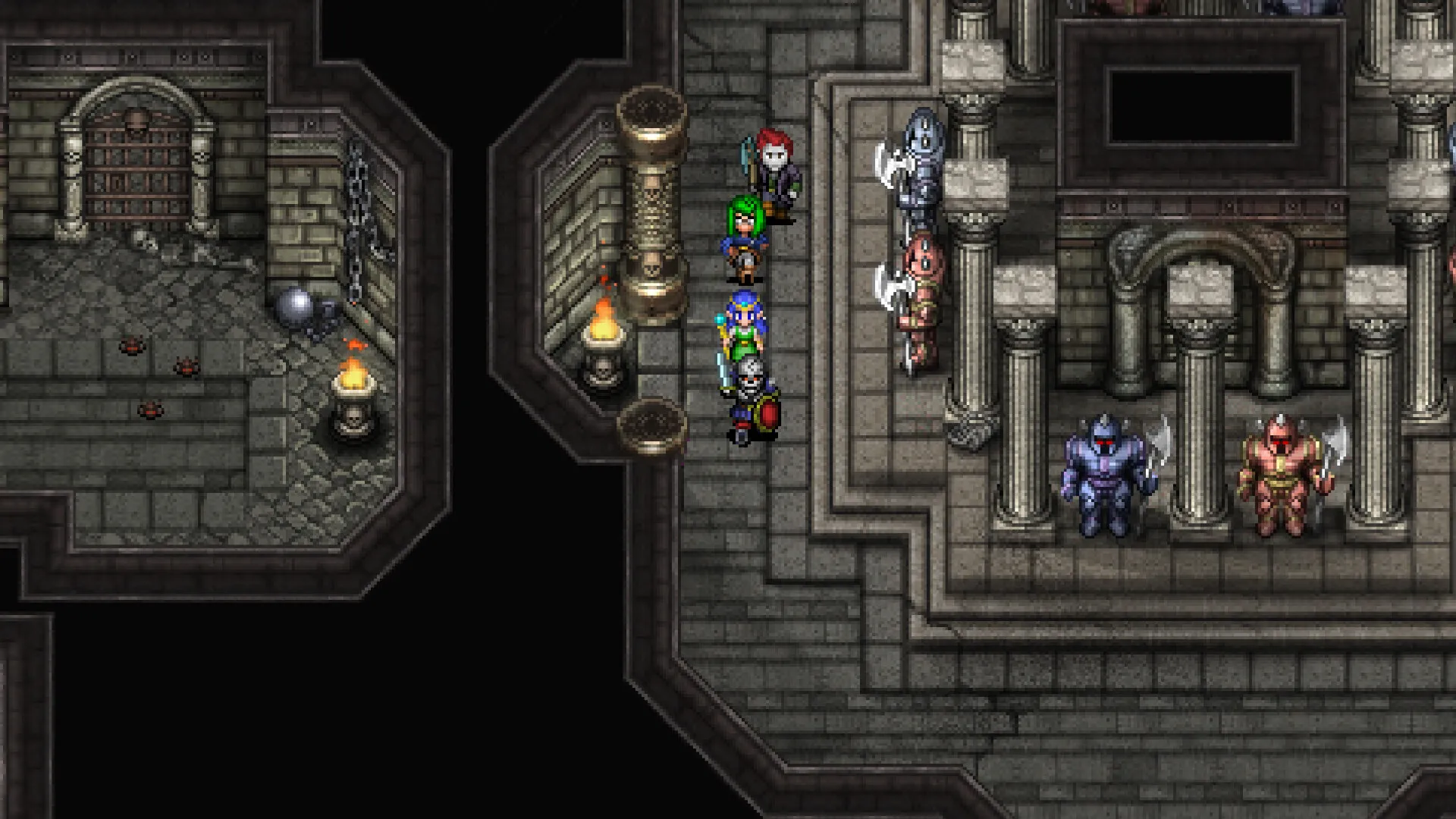In the world of independent RPGs, Breath of Death VII: The Beginning: Reanimated stands out as a charming remaster. It invites players into a strange, post-apocalyptic world full of zombies. As Dem, a mute skeleton with a rich inner life, players navigate a narrative that skillfully mixes humor with traditional RPG tropes, creating a nostalgic and new experience.
The narrative and gameplay of the game go well together. Because of the game’s unique combat system, enemies get stronger over time, forcing players to plan and move quickly. This mechanic reflects how the stakes are rising along Dem’s journey, reinforcing how urgent each meeting is. Exploration is also very important because it encourages conversations with NPCs that enrich the story and let players make decisions that affect their experience.
Character progression gives games more depth by letting players make choices that affect their party’s powers. This blend of mechanics and storytelling promotes emotional connections, making triumphs feel personal. This game shows how careful design can improve both gameplay and narrative, creating an engaging experience for all players in the world of independent games.
Unearthing Humor: Story and Characters in Breath of Death VII: The Beginning: Reanimated
Players are thrown into a vibrant but decaying landscape in the post-apocalyptic world of Breath of Death VII: The Beginning: Reanimated, where strange zombies have replaced the last humans. Players are drawn into a narrative that doesn’t take itself too seriously by this one-of-a-kind setting, which also catalyzes humor and adventure.
Dem, a mute skeleton whose inner thoughts give him personality and depth, is central to this journey. His quest to put together a loose group of people to fight an army of zombies is told in a way that makes fun of old-school RPG tropes, making the experience both engaging and nostalgic.
Supporting characters’ unique traits and comedic flair help advance the narrative. Sara, a ghost with telepathic powers, has an interesting relationship with Dem. She helps him and flirts with him in a funny way. Erik, the zombie prince, and Lita, the vampire techie, add layers of eccentricity to the group, creating a lively interplay that enhances the richness of the story. A lot of witty conversation and humor breaks the fourth wall in their interactions, keeping the mood light while exploring friendship and identity.
The most interesting thing about the character growth is how these relationships change as the adventure progresses. Players see the development of relationships as they journey together, creating an emotional investment that resonates beyond the comedic surface of the game.
Players can connect with the characters on a deeper level thanks to this blend of humor and moving moments, making each encounter feel important in the larger narrative. Breath of Death VII is a great example of how laughter and camaraderie can grow even when things are going badly in a genre where things are usually pretty serious.
Aesthetic Resurrection: Visuals and Audio in Breath of Death VII: The Beginning: Reanimated
Breath of Death VII: The Beginning: Reanimated successfully elevates its aesthetic experience through major visual and audio upgrades that give the original 8-bit experience new life. The remaster enhances character design and outdoor aesthetics, creating a more vibrant and immersive world as it transitions to a 16-bit style.
Now that there is more information about the characters, their personalities can shine through in their drawings. This polish to the graphics makes the game look more appealing and helps players feel more connected to the characters because they can see the subtleties in how they move and smile.
The beauty of the surroundings has also gotten a lot better. In the original, the visuals were a bit jumbled. The remaster makes the scenery clearer and more distinct, making it easier for players to move around. Players are drawn deeper into the narrative by the settings, which range from creepy dungeons to haunted towns, which are rich in detail. This improvement fits with the game’s humorous tone because there are silly things all over the environment, reinforcing the game’s playful spirit.
The new soundtrack from HyperDuck SoundWorks, which greatly improves the gameplay experience, goes hand in hand with these visual improvements. The catchy tunes of the original are still in the new arrangements, but they have more depth and sophistication. Each track was carefully chosen to fit the mood of a different scene, whether it’s the characters joking around or the tension of a fight that’s about to start. The music not only improves the atmosphere but also guides the player’s feelings, which helps them feel more connected to the story and what’s at stake.
Breath of Death VII stands out for its unique blend of nostalgia and humor compared to independent RPGs like Undertale and Octopath Traveler, which both use strong visual and auditory design to communicate narrative and emotion. The remaster successfully turns a charming retro game into a visually appealing and sonically engaging experience, inviting new players and returning fans to enjoy its eccentric world.
Short But Sweet: Game Length and Replayability in Breath of Death VII: The Beginning: Reanimated
The average length of playing for Breath of Death VII: The Beginning: Reanimated is three to four hours, making it a short experience that can be finished in one sitting. While respecting players’ time, this brevity may leave those who want a longer journey slightly empty. The pacing is mostly good, with a quick flow that keeps the action going and encourages discovery without staying too long.
The remaster adds a few new game types to make the game more fun to play again and again. A new side quest adds depth to the main narrative, while the Duck Difficulty adds a layer of challenge for experienced players. These features make players want to play the game again and try different methods, and character builds, even though the main story stays mostly linear. This approach is reminiscent of independent games like Hollow Knight, which balance short game times and rich, rewarding content that begs exploration and mastery.
Even though the game doesn’t have much extra material, its humor and charm make it a fun time that RPG fans will want to play again. Thanks to the blend of nostalgia and modern gameplay, even a short journey can leave a lasting memory.
A Playful Undertone: Humor and Writing Style in Breath of Death VII: The Beginning: Reanimated
The humor in Breath of Death VII: The Beginning: Reanimated is unique and resonates with fans of classic RPGs. The game is full of funny jokes and puns, and it breaks the fourth wall often in a way that doesn’t feel forced. This self-awareness not only makes players laugh at how silly things are, but it also enhances their bond with the characters. Jokes about RPG tropes and conventions deftly subvert expectations, creating a playful atmosphere that keeps the narrative engaging.
While still easy to understand, the writing style is complex, making it appealing to new and experienced players. Inside jokes and pop culture references give the game depth and give careful players a sense of camaraderie with the creators. This approach is reminiscent of the use of humor to create emotional resonance in games like Undertale.
Some puns may work better than others, but the general tone stays funny, ensuring that times of tension are balanced with times of fun. This blend of humor and thoughtful writing encourages players to embrace the game’s quirkiness, making the experience not just about the journey but also about having fun on the ride with a group of lovable characters.
A Charming Resurrection: Final Thoughts on Breath of Death VII: The Beginning: Reanimated
Breath of Death VII: The Beginning: Reanimated excels in its humor, vibrant visuals, and engaging battle mechanics, creating a fun and engaging player experience. The switch to 16-bit graphics enhances character and environmental design, making the world feel more real. The clever puns and fourth-wall breaks inject charm into the narrative. The combat system adds strategic depth by encouraging players to change as their enemies get stronger, keeping fights interesting and new.
The average three to four hours of playtime may feel insufficient for those looking for a more in-depth narrative experience, so the game’s brevity may leave some players wanting more. Also, some repetitive parts of combat may take away from the overall fun for serious players.
This remaster is a prize for both old and new JRPG fans. Its blend of nostalgia, humor, and easy-to-understand controls makes for a charming journey that emotionally resonates, making it a worthwhile adventure for anyone looking for lighthearted fun.
The Review
Breath of Death VII: The Beginning: Reanimated
Breath of Death VII: The Beginning: Reanimated is a fun homage to old-school role-playing games that blend humor, vibrant graphics, and engaging action into a small package. Though its brevity and some repetitive elements may leave hardcore players wanting more, its smart writing and quirky characters improve the experience. While inviting a new generation of gamers to enjoy its whimsical world, this remaster maintains the charm of the original.
PROS
- Clever humor and witty writing that engage players.
- Enhanced 16-bit visuals create a vibrant aesthetic.
- Engaging combat system with strategic depth.
- Strong character design and emotional storytelling.
CONS
- Short playtime may leave some players wanting more.
- Some repetitive elements in combat can detract from the experience.
- Linear narrative may limit exploration opportunities.




















































